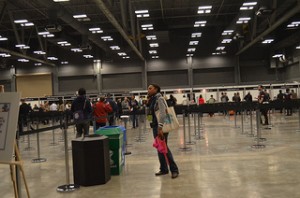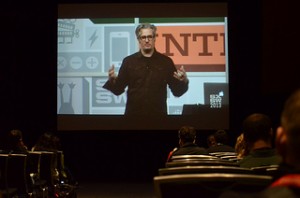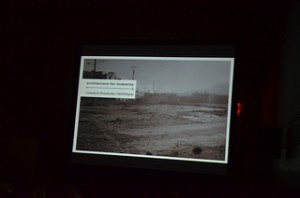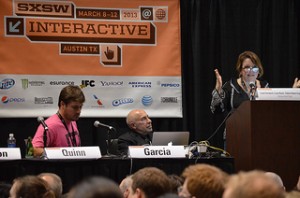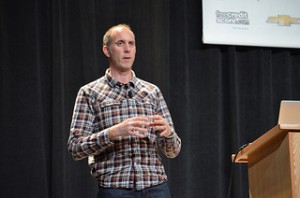I finally arrived in Austin after an unfortunate and unscheduled overnight layover in Houston. Was the plane late because of the sequester? I guess we will never really know.
Anyway, we are staying in a very cute house, much better than last year when we were banished to the hotel with no water between 9 and 5 that was a half hour drive from the convention center.
Registration was a snap this year, unlike last year when I waited about an hour in a huge line. Complaints about last year now over.
Panels- I caught most of Bre Pettis (of MakerBot) opening remarks. He showed how the Replicator is being used, stressing the importance of 3d printers to kids and education applications specifically. My favorite, a little girl whose dad (I think) had printed lifts for her shoes so she was tall enough to ride the rides at an amusement park.
He announced MakerBot Digitzer, which will combine lasers and a web cam to make a digital model of an object, coming next fall. His talk announced MakerBot’s partnership with Autodesk to incorporate 3-D printing capabilities from the 123D series of apps.
In Connected for Reconstruction, architect Cameron Sinclair discussed the work his non-profit Architecture for Humanity has done in reconstructing disaster sites. Local involvement and commitment to build are critical approaches for meaningful reconstruction. Speaking of the earthquake in Haiti: “Bad buildings kill people, not earthquakes.” He explained the rule of 4s: 4 days to respond 4 weeks to raise money 4 months to mobilize 4 year minimum commitment. Interesting talk.
I saw a bit of Lean Forward, Lean Back: Tablet News Experience looked at how users read on tablets. Sara Quinn of Poynter Institute and Dave Stanton of Smart Media Creative discussed a study from Poynter that used eye-tracking technology to gather statistics on user behavior. The Poynter study showed that different generations read on tablets somewhat differently and that the average time when users stop paying attention is 80-90 seconds. Marco Garcia discussed his study “Storytelling in the Age of the Tablet”. Garcia: “The first 10 seconds are very important because you get to establish a connection between the product and the brand, which is already familiar.â€
Awe-Inspiring Web Typography You Can Do Now– how could I miss this panel. I didn’t! Richard Rutter of Fontdeck showed some simple, and sometimes not so simple, CSS techniques to ensure better typography on the web. Studies apparently have shown the good typography induces a good mood, though it doesn’t make a difference in reading comprehension. We need good moods! He talked about using media queries for properties such as line length, line-height, number of columns, small caps. Ems! My students look at me blankly when I first introduce ems, but they are critical.
That was more or less it for me on Friday. I did get to the very end of The Learn to Code Movement. Didn’t hear much, but a did hear a passionate member of the audience point out that writing code is a creative activity, though it is often not recognized as such. Yes!
Dinner with Josh Frankel and went to sleep early to recover from unscheduled stop in Houston.

